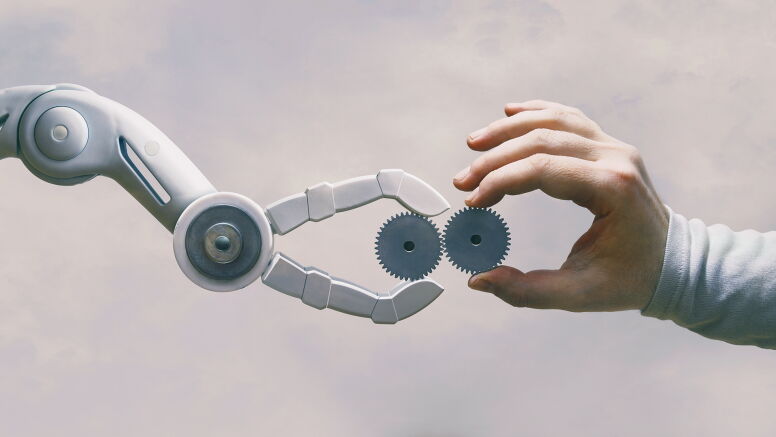News & Stories
Shaping the future of work

In the future, your “team” at work could be an ever-changing mix of freelance workers who come and go depending on the project.
In fact, you could very well be one of those freelancers yourself. Your company might change from day-to-day or even hour-to-hour as you transition from one project to another.
That’s the prediction of Arvind Malhotra, the H. Allen Andrew Professor of Entrepreneurial Education and professor of strategy and entrepreneurship at UNC Kenan-Flagler, as he looks out on the future of work.
Many company workforces will transition from being dominated by permanent employees to a constantly evolving group of contract workers who come and go based on the firm’s needs and their own interests, says Malhotra.
Employers, in turn, will harness technology to find the optimum mix of talent for each new project.
Malhotra writes about the changing world of work in two new papers. He wrote “A Future of Work and Organizations” – with Ann Majchrzak of the University of Southern California and Alpheus Bingham, president and CEO of InnoCentive, in Management Business Review – and on research gaps in “Post Pandemic Future of Work.”
Drive for autonomy
Worker autonomy will be a central organizing principle for the future workforce, says Malhotra. People will want to control when they work, where they work and who they work with.
Intrinsic motivations, such as social impact, are increasingly important for younger workers, researchers have found. Companies will also have to grapple with how meaningful a project is to the talent needed to complete it successfully.
Individuals have different idea of what’s meaningful, Malhotra says. For some people, it might be the opportunity to work on a particularly challenging problem. Other workers might be inspired by working on the socially conscious activities of a firm.
Many organizations will end up with a smaller core of full-time employees who provide just enough institutional structure to operate, while day-to-day work and special projects are carried out by a shifting cadre of freelancers and independent workers. Malhotra and his colleagues call these organizations “flash powered” because work is done largely by an on-demand workforce.
Uber is one company that already puts this into practice. The ride-sharing service relies on a network of independent drivers to provide its basic services. As demand for the company’s services rises and falls, its algorithm adjusts pricing to manage the demand for rides and the supply of drivers available, with rising rates drawing more drivers to work.
Uber – as well as platforms such as Fiverr and Upwork – are early examples of what the Malhotra calls “algorithmic orchestrators.” They use technology to bring together the right mix of freelancers to accomplish a particular task or project.
More sophisticated versions of these platforms also exist for tasks such as crowdsourcing creative ideas and innovation.
In the future, these platforms will grow smarter to better match freelance workers’ intrinsic motivations — the nature of a particular task or project, social impact, freedom to affiliate with chosen organizations and other criteria — with employer needs.
The challenge will be to attract the best freelancers for a project as well as construct the best overall team.
Robots, AI and humans
Workers and employers can think about different jobs in a matrix.
On one axis is routine versus nonroutine work. On the other axis is whether the work requires high amounts of information processing versus an understanding of human emotions.
Routine work involves tasks that are predictable. In some cases, routine work might be wholly or partially automated through technology. Nonroutine work calls for creativity and innovation.
Technology could replace human workers in some cases. Uber and other companies are working on self-driving vehicles that would eliminate the need for human drivers, for example.
In other jobs, technology might handle part of the job – especially when large amounts of information must be processed quickly or machines can better handle the physical labor – but humans will still make final judgments and deliver services in a human-centric way. Malhotra cites the delivery of healthcare to remote areas of Canada this way, with physicians interacting with and diagnosing patients remotely through robots and other technology, as one example.
Preparing for the future
It’s not too soon for companies – and individuals – to begin thinking about what these changes mean for them.
For individuals, it might mean thinking about how your job and organization match up – or don’t – with your values and intrinsic motivations. Workers, Malhotra says, can and should ask more of their jobs.
For employers there are two main areas of change to focus on.
First, technology will continue to be a tool for automating simple and routine tasks – both physical and cognitive work. The challenge for companies will be to continue to attract the best talent to handle those aspects of work that can’t be delegated to a machine.
Second, organizations must promise more from their jobs. This will likely include taking into account concerns such as work-life balance, inclusivity and positive social impact. Firms also will need to adopt systems to match up worker interests and talents with their organizational needs, allowing them to build teams as needed to handle one-time initiatives as well ongoing activities.